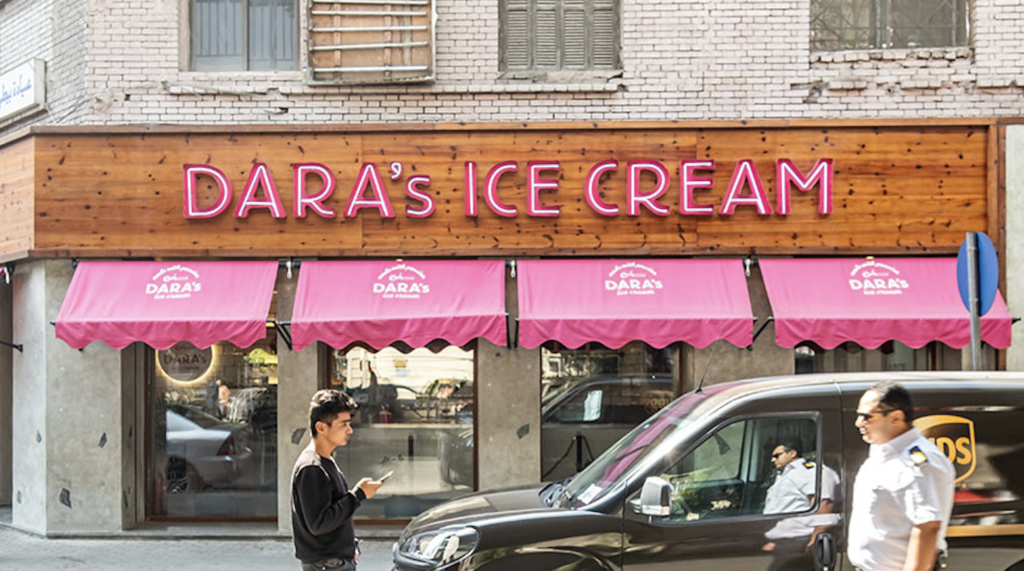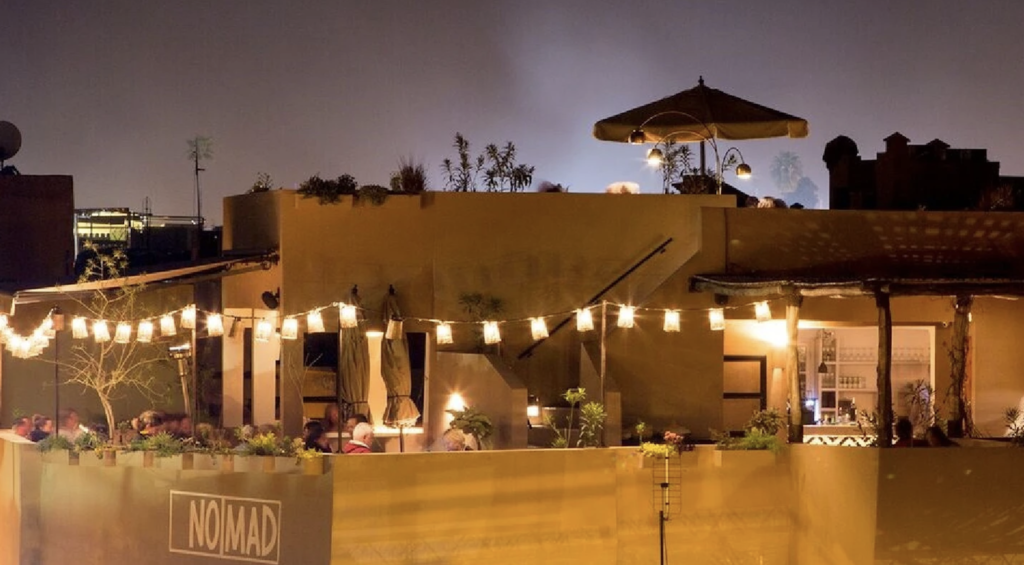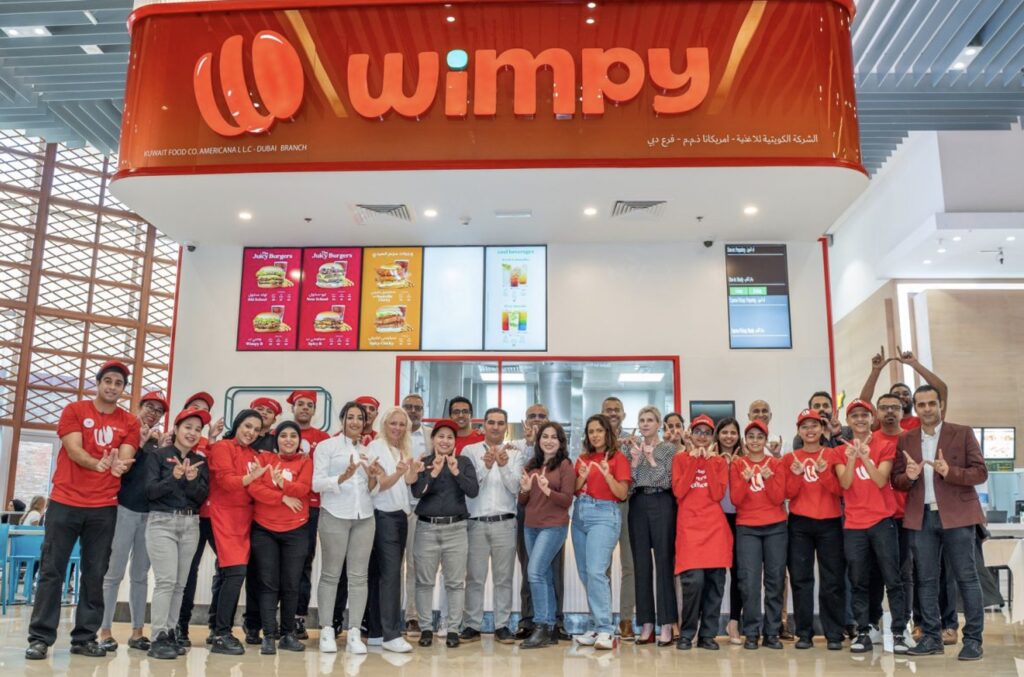Arab Culinary Fusion: How Globalization Is Shaping the Arab Food Industry

By: Maryem Bouatlaoui / Arab America Contributing Writer
Globalization has undoubtedly had a profound effect on the Arab food industry. As the world becomes increasingly interconnected, the availability of diverse ingredients and culinary influences from different regions has expanded exponentially. Arab consumers now have access to a wide range of international food options, allowing them to explore new flavors and culinary experiences. Moreover, globalization has influenced restaurant signage, with many establishments adopting multilingual menus and international designs to cater to a diverse customer base.
Expansion of the Western Fast Food Industry
In 1992, McDonald’s opened its first branch in Casablanca, Morocco, the first store in Africa and the Arab world. The fast food chain continued to rapidly expand across the Arab world into Saudi Arabia, Egypt, and the United Arab Emirates in the mid-1990s. McDonald’s is globally recognized as an American symbol of consumerism, and the expansion of the franchise continued to spread Americanism across the world. While McDonald’s in the United States is considered a cheap, fast food restaurant, consumers in other countries, especially in the Arab world, consider McDonald’s a luxury.
As McDonald’s began to further its expansion across the Arab world, the franchise began to develop its cultural marketing strategy by adding international food items to its menu. McDonald’s entered the Arab world with a twist, introducing exclusive items such as the McFalafel, a falafel wrap, and the McArabia, a gyro wrap. On Arab McDonald’s menus, conventional McDonald’s item names are transliterated into an Arabized version of the English version. For example, “apple pie” on an Arab McDonald’s menu is abilbai in Arabic script.

Academic scholarship is tracking the emergence of a multinational identity in the Arab world. Anthropologist Mark Allen Peterson’s Connected in Cairo extrapolates on the effect that globalization has had on the cosmopolitan Egyptian culture. In his publication, Peterson analyzes different aspects of the Egyptian cosmopolitan lifestyle including education, style, and entrepreneurship. Peterson delves into the expansion of American fast food into the Arab world and the intergenerational impact it has on Egyptian culture. Peterson states, “What it is selling is the McDonald’s experience, a multi-local space… in which cosmopolitan consumers… can participate in a particular form of commodified modernity.”
Modern Fusion Arab Restaurant Culture
Beyond the fast food industry, the Arab world has embraced a new trend: Anglophone signage. Domestic Arab brands now capitalize off of the English, French, or Spanish languages in their branding, marketing, and company names. The Zamalek District in Cairo houses hundreds of Anglophone restaurants such as “Dara’s Ice Cream,” “O’s Pasta,” and “Wimpy.” While some restaurants like “Dara’s Ice Cream” are Egyptian restaurants, shops like “Wimpy” are extensions of foreign franchises. In major cities in Morocco, there are numerous Anglo-titled restaurants. Marrakech, Morocco, renowned for its touristic appeal, has restaurants titled “Nomad,” “Fine Mama,” and “The Red House.”
In addition to signage, Arab restaurants are also embracing international elements and inventing fusion cuisine. Items such as Arab sushi, shawarma tacos, and hamachi with zaatar are only a few of the many fusion dishes in the Arab food industry. Young French-Syrian chef, Soleman Haddad revolutionized fusion Arab cuisine in Dubai by incorporating Japanese, French, and Indian elements into traditional Arab recipes. In an interview with Arab News, Haddad stated the fusion cuisine industry in Dubai is an emerging market with much potential.

The Role of Foreign Investment
The emergence of fusion cuisine in the Arab world is partially accredited to foreign investments. Foreigners are investing in the Arab cosmopolitan lifestyle, elevating the food scene in the Arab world. In 2021, foreign direct investment net flows accounted for 2.2% of the Middle Eastern North African GDP. In addition, the 2023 Kearny Foreign Direct Investment Confidence Index lists the United Arab Emirates, Qatar, and Saudi Arabia as one of the top 25 attractive for foreign investors.
Despite the promising statistics, foreign investors are afraid of, as Mark Allen Peterson notes, the “risk of loss of control over operations in the host country.” A prime example of such is Wimpy, an American fast-food restaurant chain originally based in Bloomington, Indiana. The all-American company took its franchise to the Middle Eastern North African region and became an American cuisine restaurant chain in Kuwait, Egypt, and Saudi Arabia. While Wimpy no longer exists in the United States, it is safe to say that Wimpy is thriving in the MENA region and continues to diversify the MENA culinary culture.

Globalization is an omnipotent force, interconnecting every corner of the world. The trend of fusion cuisine in the Arab world not only reflects the growing cosmopolitan culture but also demonstrates the region’s capability to foster global experiences. The effect of globalization on the Arab food scene is thus evident in the increased variety of food choices and the evolving representation of dining establishments, creating an inclusive culinary palette.
Check out Arab America’s blog here!









